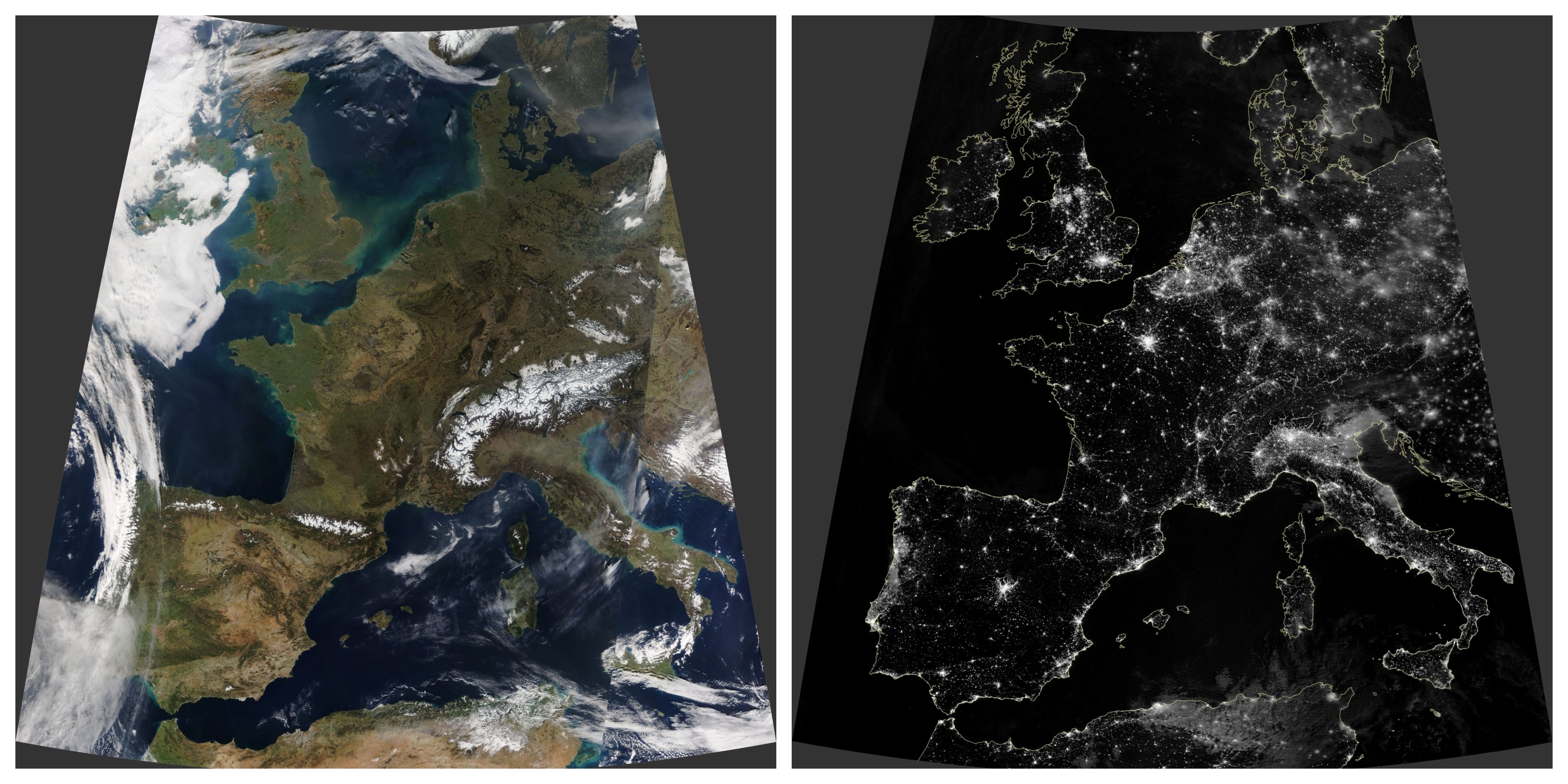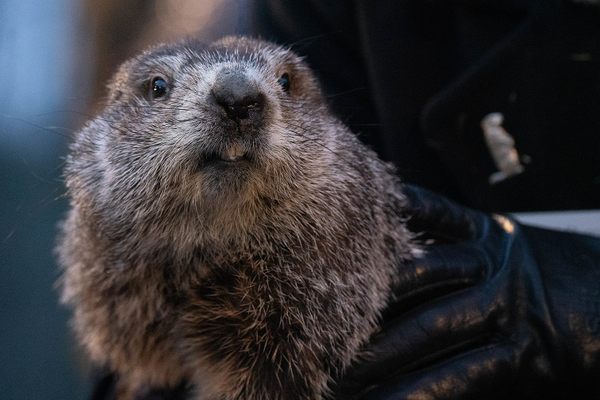Look at Everything Beneath Europe’s Clouds
When the infamously cloudy continent got a February reprieve, satellites got a clear view.

Europe is busy and bustling, of course, packed with people and plants, cities and farmland. All that action down below, though, is often obscured from the sky.
Normally, Europe is cloudy this time of year, NASA reports, “when the jet stream often steers storm systems directly toward Western Europe.” But cloud cover is common a lot of other times, too. One longitudinal study of satellite data found that more than two-thirds of the planet’s surface was generally cloaked by clouds, and this soupy shroud was especially pronounced right near the equator and then in wider bands 60 degrees north and south of it, including one that belts Europe. There, two of the planet’s large air circulation features—the Ferrel cell and the polar cell—collide and thrust air upward, according to NASA.
But at the end of February, a high-pressure system moved through. The temperatures were warm, and the skies were uncommonly clear. That allowed satellite images to capture bright city lights and multi-colored landscapes in Eastern and central Europe that are usually engulfed by white wisps.
Two images from the last week in February were recently shared by NASA’s Earth Observatory. The daytime image, captured with the Moderate Resolution Imaging Spectroradiometer (MODIS) on the Terra satellite, shows a patchwork of greens, browns, and beige. The areas that appear the deepest green are the ones with the thickest forest cover; farmland registers as more brown or khaki. Things are greener in Belgium, the Netherlands, and parts of the U.K. and France than they are in central and Eastern Europe, NASA notes, where the dry cold can be lethal for plants. A nighttime image of the same region—taken aboard the Suomi NPP satellite—shows cities sparkling far below. (The gauzy glow around Central Europe is a thin layer of scattered cloud cover, NASA reports.) The satellite image highlights how—from a distance, and when the clouds give way—lit-up cities can look a bit like the cosmos.








Follow us on Twitter to get the latest on the world's hidden wonders.
Like us on Facebook to get the latest on the world's hidden wonders.
Follow us on Twitter Like us on Facebook